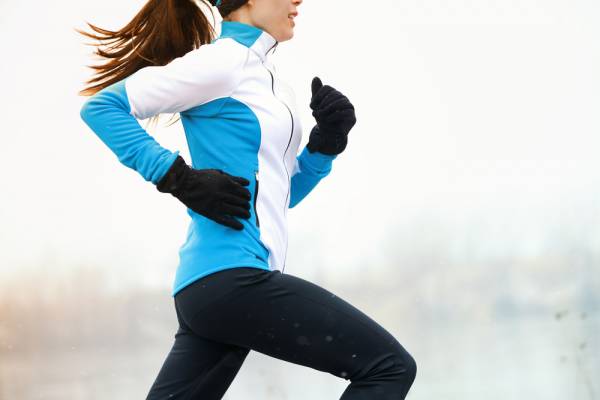Training in the winter brings some unique situations and demands. As a result, training in the elements has some great rewards that are usually avoided by many. We have a higher resistance to going for a run in the rain or snow, but everything time I do it or have a client do it, the experience is loved. People will avoid getting wet or cold with a vengeance, but once you’re already wet it becomes fun and you can enjoy the adverse conditions. Some of my best runs have been in the worst conditions.
That being said, there are a few critical steps involved in training safely through the winter and coming out stronger. When training in the winter, you need to make sure you can manage your internal temperature, keep extremities warm, stay hydrated, and avoid injury. Training in adverse conditions requires proper equipment and clothing, awareness of how to deal with the cold, and knowing the difference between the uncomfortable and the potentially dangerous.
Tip #1: Dress Appropriately
Cold feet are one thing; completely numb feet are another. When dressing for cold temperatures you should feel cold when you start a run or your warm up. If you are warm when you leave the door, then soon you will get hot and start to sweat. Once you begin to sweat, your body can cool down rapidly and become cold. Training in the winter takes a balance of not getting too cold, but not getting too hot either.
Experiment with different layers and types of material until you find what works well with your body. Also be ready to head back in if you need to get warm. There is a difference between tough and stupid. Those days when your hands are so cold you can barely open them to get your key out and opening the car turns into a five-minute game probably erred a bit on the not-so-smart side.
Making sure your core temperature is within normal range is the biggest priority, but keeping your fingers and toes warm is important too. I’ve found spending a bit more money on some high-quality gloves makes all the difference in the world.
Tip #2: Stay Hydrated
Even in the winter you need to stay well hydrated. You still lose a significant amount of fluid during exercise even if it doesn’t feel like it. Thirst is not a great indicator that you should drink. By the time you are thirsty, you’re already behind the game. Thirst means you’re running low on fluids. You want to avoid letting the tank run too low by replenishing and keeping it topped off. Good hydration means better performance and faster recovery. Overall, it means less stress on the system with the same benefits gained.
Keep a water bottle with you at all times. A simple trick is to put warm or hot water in your bottle when you leave the house, then by the time it cools down it’s not an ice block.
Tip #3: Remember Metal Gets Cold, Too
Your body will take time to adapt to the colder temperature. You will go through many different changes the more time you spend in a colder environment. These changes allow you to deal with the colder temperature more efficiently. Running in the cold is probably the easiest training. Dealing with metal weights becomes a whole different matter.
 In the cold, barbells become stiffer and bumper plates are not as effective. Olympic lifts and drops should be left to indoor training for the sake of your body and the equipment. Using weights in the cold is okay, but you need to make sure your hands are not going numb. Either keeping your core temperature high enough or wearing gloves is critical. If your hands become numb it is unsafe to lift weights because you may lose control and drop them.
In the cold, barbells become stiffer and bumper plates are not as effective. Olympic lifts and drops should be left to indoor training for the sake of your body and the equipment. Using weights in the cold is okay, but you need to make sure your hands are not going numb. Either keeping your core temperature high enough or wearing gloves is critical. If your hands become numb it is unsafe to lift weights because you may lose control and drop them.
Tip #4: Beware of Explosive Movement
You need to make sure you don’t become too cold and then perform explosive activities such as plyometrics, sprints, or gymnastics. There is a greater risk of muscle and tendon damage (tears, in particular) when trying to use cold muscle explosively. Athletic clothing these days is form fitting, designed with proper vents and added material to keep joints warm. Spending a little bit of money on the proper training gear is worth it. Depending on the activities, knee sleeves or arm sleeves can also be a lifesaver.
Get to know your body, adapt gradually, and enjoy the cold season. Don’t let the winter cold stop your training, but rather, come into spring with a great base for the year. Use the winter as a training cycle and not a period of hibernation.
Photos courtesy of Shutterstock.






